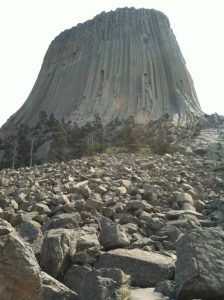MYSTORY: N. Scott Momaday
 The Way to Rainy Mountain. Son of a White mother and Kiowa father, Momaday was raised on a reservation. His novel House Made of Dawn won a Pulitzer Prize in 1969. His autobiographical The Way to Rainy Mountain was assigned as relay modeling the micro form and overall structuring by means of signifiers repeating across levels of the popcycle. Rainy Mountain juxtaposes Kiowa myths Momaday learned from his grandmother; the actual history of the Kiowa symbolized in the myths; his personal recollections of his childhood on the reservation. The text manifests identification (with his grandmother Aho and his grandfather Mammedaty); the use of pattern (the unity of each section is created by the repetition of a detail within the exposition across the three discourses); the use of setting to express feeling (the memories of scenes from the reservation). Most important is the location of Momaday’s memories of childhood in the context of the traditional stories and actual history of his Community (Kiowa), thus bringing the three levels of his symbolic experience into contact–personal, historical, mythical (entertainment fictions in a modern point of view). The book is a collection of thirty-four three-paragraph units (plus introduction and epilogue) illustrated with drawings by Momaday’s father. Unit 3 is cited as example: the popcycle sequence is always the same: Mythology; History; Memory.
The Way to Rainy Mountain. Son of a White mother and Kiowa father, Momaday was raised on a reservation. His novel House Made of Dawn won a Pulitzer Prize in 1969. His autobiographical The Way to Rainy Mountain was assigned as relay modeling the micro form and overall structuring by means of signifiers repeating across levels of the popcycle. Rainy Mountain juxtaposes Kiowa myths Momaday learned from his grandmother; the actual history of the Kiowa symbolized in the myths; his personal recollections of his childhood on the reservation. The text manifests identification (with his grandmother Aho and his grandfather Mammedaty); the use of pattern (the unity of each section is created by the repetition of a detail within the exposition across the three discourses); the use of setting to express feeling (the memories of scenes from the reservation). Most important is the location of Momaday’s memories of childhood in the context of the traditional stories and actual history of his Community (Kiowa), thus bringing the three levels of his symbolic experience into contact–personal, historical, mythical (entertainment fictions in a modern point of view). The book is a collection of thirty-four three-paragraph units (plus introduction and epilogue) illustrated with drawings by Momaday’s father. Unit 3 is cited as example: the popcycle sequence is always the same: Mythology; History; Memory.
III
Before there were horses the Kiowas had need of dogs. That was a long time ago when dogs could talk. There was a man who lived alone; he had been thrown away, and he made his camp here and there on the high ground. Now it was dangerous to be alone, for there were enemies all around. The man spent his arrows hunting food. He had one arrow left, and he shot a bear; but the bear was only wounded and it ran away The man wondered what to do. Then a dog came up to him and said that many enemies were coming; they were close by and all around. The man could think of no way to save himself. But the dog said: “You know, I have puppies. They are young and weak and they have nothing to eat. If you will take care of my puppies, I will show you how to get away.” The dog led the man here and there, around and around, and they came to safety.
A hundred years ago the Comanche Ten Bears remarked upon the great number of horses which the Kiowas owned. “When we first knew you, he said, “you had nothing but dogs and sleds.” It was so; the dog is primordial. Perhaps it was dreamed into being. The principal warrior society of the Kiowas was the Ka-itsenko, “Real Dogs,” and it was made up of ten men only, the en most brave. Each of these men wore a long ceremonial sash and carried a sacred arrow. In times of battle he must by means of this arrow impale the end of his sash to the earth and stand his ground to the death. Tradition has it that the founder of the Ka-itsenko had a dream in which he saw a band of warriors,, outfitted after the fashion of the society, being led by a dog. The dog sang the song of the Ka-itsenko, then said to the dreamer: “You are a dog; make the noise like a dog and sing a dog song.”
There were always dogs about my grandmother’s house. Some of them were nameless and lived a life of their own. They belonged there in a sense that the word “ownership” does not include. The old people paid them scarcely any attention, but they should have been sad, I think, to see them go.
Each numbered section is unified around one “pedagogical object”: arrow, spider, horse, hunting and the like. The importance of Mammedaty in this world is documented in unit XXI, in which Mammedaty appears in all three of the popcycle levels. The Disaster governing this world is that of the reservation itself, the destruction of the Kiowa people.
